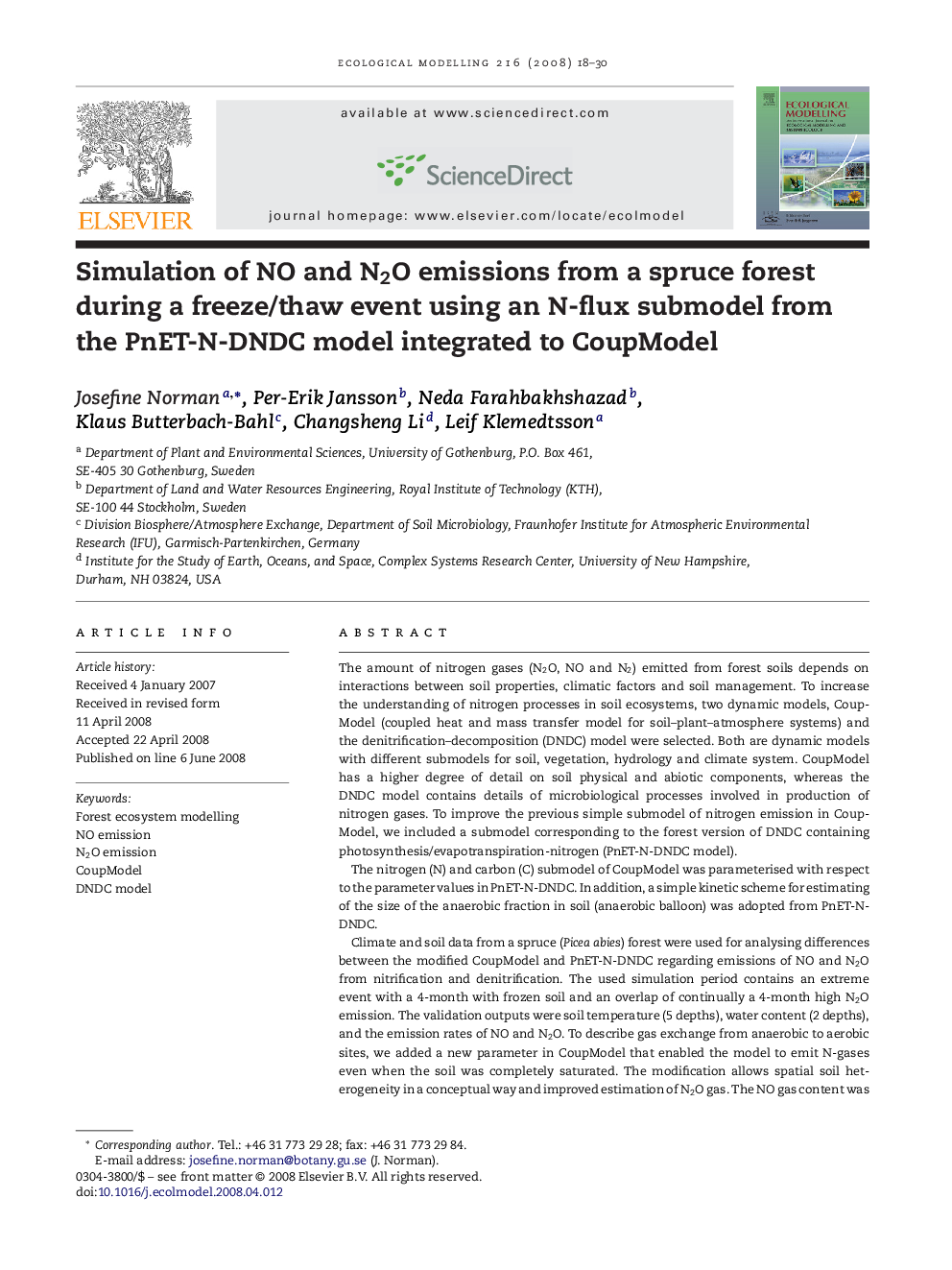| Article ID | Journal | Published Year | Pages | File Type |
|---|---|---|---|---|
| 4378089 | Ecological Modelling | 2008 | 13 Pages |
The amount of nitrogen gases (N2O, NO and N2) emitted from forest soils depends on interactions between soil properties, climatic factors and soil management. To increase the understanding of nitrogen processes in soil ecosystems, two dynamic models, CoupModel (coupled heat and mass transfer model for soil–plant–atmosphere systems) and the denitrification–decomposition (DNDC) model were selected. Both are dynamic models with different submodels for soil, vegetation, hydrology and climate system. CoupModel has a higher degree of detail on soil physical and abiotic components, whereas the DNDC model contains details of microbiological processes involved in production of nitrogen gases. To improve the previous simple submodel of nitrogen emission in CoupModel, we included a submodel corresponding to the forest version of DNDC containing photosynthesis/evapotranspiration-nitrogen (PnET-N-DNDC model).The nitrogen (N) and carbon (C) submodel of CoupModel was parameterised with respect to the parameter values in PnET-N-DNDC. In addition, a simple kinetic scheme for estimating of the size of the anaerobic fraction in soil (anaerobic balloon) was adopted from PnET-N-DNDC.Climate and soil data from a spruce (Picea abies) forest were used for analysing differences between the modified CoupModel and PnET-N-DNDC regarding emissions of NO and N2O from nitrification and denitrification. The used simulation period contains an extreme event with a 4-month with frozen soil and an overlap of continually a 4-month high N2O emission. The validation outputs were soil temperature (5 depths), water content (2 depths), and the emission rates of NO and N2O. To describe gas exchange from anaerobic to aerobic sites, we added a new parameter in CoupModel that enabled the model to emit N-gases even when the soil was completely saturated. The modification allows spatial soil heterogeneity in a conceptual way and improved estimation of N2O gas. The NO gas content was almost unchanged in simulations due to the majority being formed during nitrification. The simulated accumulated amount of N2O varied between an underestimation of −41% and an overestimation of 15% to from the field data. For the accumulated NO emission differences between the simulations were smaller, from −15% to 18%. This provided the possibility to further investigate CoupModel's potential in describing N emissions during denitrification from different ecosystems.The system proved to be sensitive to additional N deposition, and increasing available N, for nitrification and denitrification in thawing conditions forced CoupModel to emit NO and N2O earlier in the spring.
